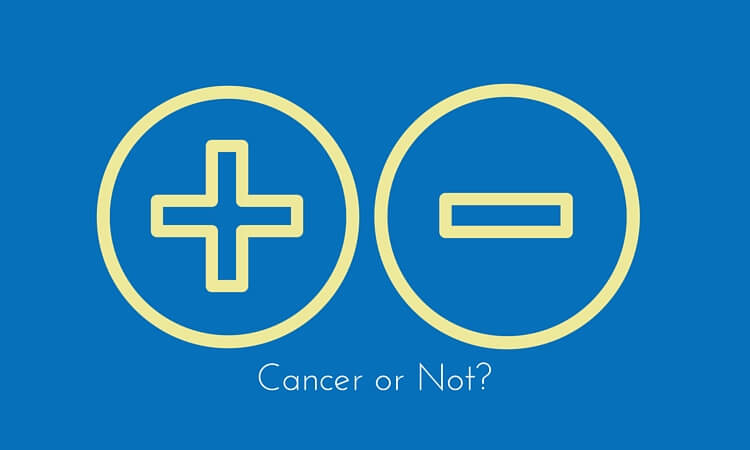As technology continues to improve in the medical field, doctors are finding new (and earlier) ways to detect cancer. While we certainly applaud early detection and awareness, many of these tests can actually cause more harm than good. And to make matters worse, studies are showing the cancers being detected are many times not cancer at all. Unfortunately, however, these diagnoses are leading many patients to undergo harmful – and unnecessary – treatments that can change their lives forever.
The need for a second opinion is never more important than it is with a cancer diagnosis, especially as new evidence comes to light that shows many cancer patients never had the disease in the first place.
Cancer or not?
The new evidence started coming to light back in 2012. The National Cancer Institute began to evaluate the possible misclassification of various cancers, including breast, prostate, thyroid and lung. They found that many of these cases were overdiagnosed and overtreated—that, in fact, instead of cancer, these tumors should have been called “indolent or benign growths of epithelial origin.” Basically harmless growths that don’t require the types of damaging treatments often used to treat these types of cancer.
Breast cancer is often misdiagnosed and overtreated, and a new study and a new test are proving it. A recent clinical trial looked at more than 6,700 women across nine countries and determined many breast cancer patients undergo harmful chemotherapy they don’t actually need. The trial used a new genetic test called MammaPrint, which showed that following surgery to remove the tumor, patients with a MammaPrint score that advised against chemo had a survival rate of 95 percent.
Before this test, doctors would make an educated guess about the need for chemotherapy based on the tumor’s size and other genetic markers. MammaPrint, on the other hand, evaluates genes within the tumor to determine how aggressive it is. Laura J. van ‘t Veer, PhD, invented the test and worked on the trial:
“Our test looks under the hood at the engine of the tumor. The biology tells more about the tumor than simply examining its size because you’re really looking into the tumor … If we can select those patients that don’t need chemotherapy, unneeded treatment can be avoided and we will be one step closer to making sure treatment for breast cancer is tailored to the individual.”
The test confirms what many in the field have been saying for a while—that low-risk lesions, such as ductal carcinoma in situ (DCIS) and high-grade prostatic intraepithelial neoplasia (HGPIN) should not be called cancer (or treated like cancer). In fact, that suggestion was published in 2013 in the Journal of the American Medical Association (JAMA).
What’s in a name?
The changes go beyond breast cancer. In April, an international panel of doctors officially reclassified a lump often found in the thyroid from “encapsulated follicular variant of papillary thyroid carcinoma” (cancer) to “noninvasive follicular thyroid neoplasm with papillary-like nuclear features.” The name is still a mouthful but the word “carcinoma” has been removed—basically, it’s no longer cancer. The change will impact nearly 10,000 patients each year in the United States, who can now avoid surgery to remove their thyroid as well as subsequent treatment with radioactive iodine and a lifetime of checkups.
Where do we go from here?
The new changes are expected to also have an effect on other cancer types, including lung and prostate cancers, as calls to downgrade small lesions have increased. Just eliminating the word “cancer” from the name makes a big difference, but progress continues to move slowly from the major cancer organizations. Dr. John Morris, president-elect of the American Thyroid Association, summed it up well in an article in The New York Times:
“If it’s not a cancer, let’s not call it a cancer.”
The findings are hopefully a sign of progress in the right direction, but I encourage everyone who receives a cancer diagnosis to take time to learn more about your individual case. Find other physicians with different perspectives and get a second (or third or fourth) opinion, and explore alternative treatment options that are safer and less toxic to your body. We would love to help you evaluate your options, so don’t hesitate to contact us!
Dr. Subrata Chakravarty is the Chief Science and Technology Officer at Hope4Cancer. Join the conversation by tweeting @Hope4CancerMex or commenting on the blog or Facebook page.


I have DCIS 0 and stage 3, had lumpectomy and starting Radiation 18th. I am scared od what the Radiation is foing to do to my body.
Hello Frances,
I am so sorry to hear all you are currently going through. It is understandable you are concerned and want to know all of your options. Our treatments are integrative and can be complimentary to conventional therapies should the patient wish to pursue that option.
Our treatments are non-toxic and are geared towards helping build up the patient’s immune system and preserving their healthy cells, rather than tearing down all cells in general. Many conventional treatments focus on the destruction of cancer cells which can
weaken the patient’s immune system. A patient’s immune system needs to be strong to be able to fight off disease.
We are not able to give medical advice directly through our website or social media platforms, but please contact our admissions office at 888-544-5993 or go to https://hope4cancer.com/schedule-a-call/ and fill out the form and one of our admissions officers can get you a consultation with our doctor.
I also was diagnosed with DCIS, Stage 0, nuclear grade 2, ER+ and was recommended to have a mastectomy, or if not that, at the very least, a lumpectomy (with the understanding that if the margins were not clear a mastectomy was the next surgery), followed by radiation and hormone therapy. I asked for a second opinion but the primary care provider balked, and I asked at the hospital for a second surgeon to look at my case. I was successful in getting an appointment but after a 1.5 hour wait I left as I was late for my next appointment.
If DCIS is not cancer, how can treatment at H4C help with this diagnosis?
We are so sorry to hear all you are going through at this time. We are not able to give medical advice directly through our website or social media platforms. Please contact our admissions office at 888-544-5993 or go to https://hope4cancer.com/schedule-a-call/ and fill out the form so one of our admissions officers can get you a free consultation with our doctor.